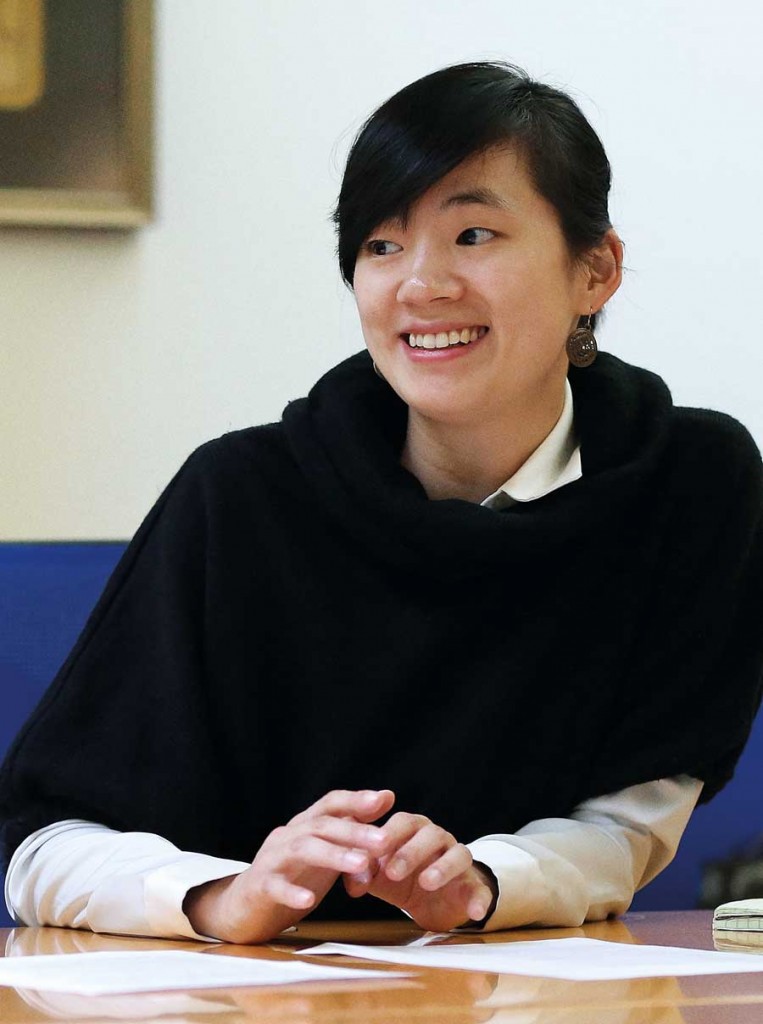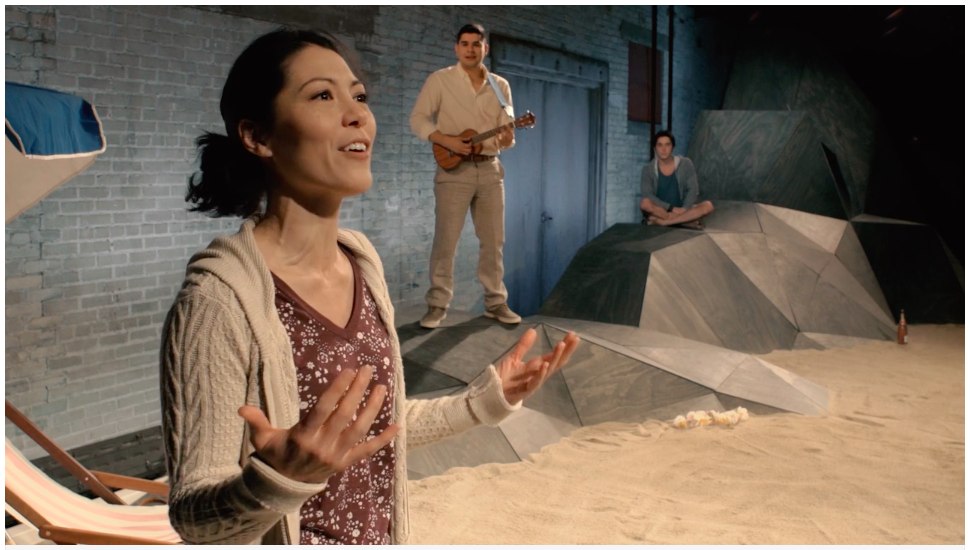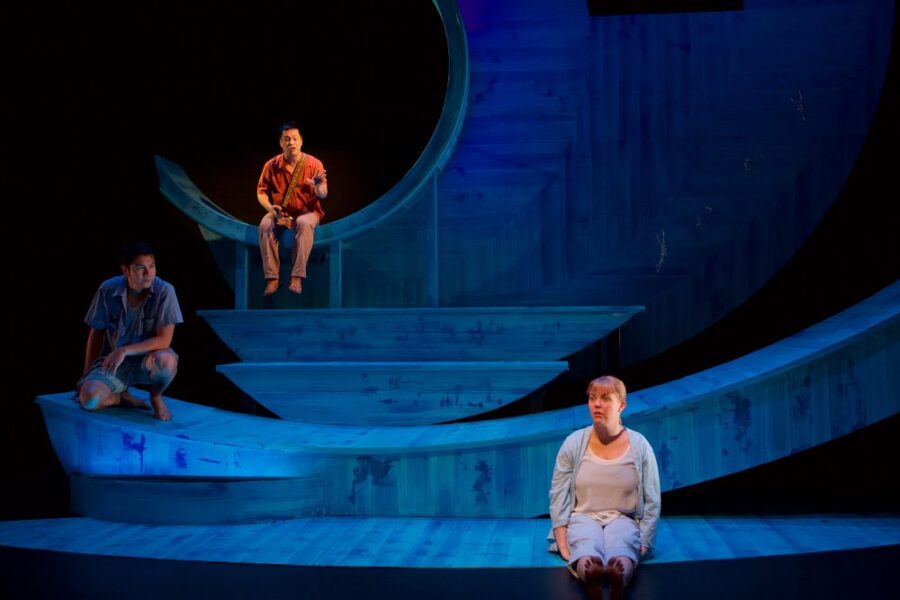BOISE, IDAHO, and CHICAGO: Playwright Hansol Jung is racking up the miles. Her play No More Sad Things is currently receiving simultaneous productions in Chicago and Boise, Idaho—and she’s frequently in Kentucky for production meetings for her play Cardboard Piano at Actors Theatre of Louisville.
Indeed, when she answered the phone for this interview, she confessed, “I’m on the road—I’m actually driving to Chicago from Louisville.” It had been announced just the previous day that Cardboard Piano would receive its professional world premiere at the 2016 Humana Festival of New American Plays, March 25–April 10). The itinerary she outlined sounded dizzying.

“I’m going to be going back to Chicago for the previews and opening, and then over the weekend I have production meeting in Louisville, and on Monday, I’m going back to Boise for second preview,” Jung said. “I wish all the theatres would consolidate their miles, because I’m flying Virgin, then United and American and Delta! Guys, this is not helping me!”
She admits that she can’t complain too much. It’s been a banner year for her: She had three plays on this year’s Kilroys list, making her this year’s most recommended playwright (which is partly how she got on our radar for a recent Role Call piece). Despite that attention, these two productions of No More Sad Things—at Chicago’s Sideshow Theatre Company Nov. 15–Dec. 20, and Boise Contemporary Theater Nov. 24–Dec. 19—are her first professional productions since she got her MFA from Yale in 2014.
“It was coincidence,” Jung recalled. “They both asked for the rights to the world premiere around about the same time—I think in the same week. It’s all different casts and different direction and designers. It’s very strange, the culture of world premieres. I don’t quite understand it but I guess it matters to them.”
Jung was born in South Korea and raised in South Africa; her transcontinental roots show up in her accent, a melodic hybrid that sounds vaguely Australian. And she has a sister in Oahu, Hawaii, which is where the inspiration for No More Sad Things came from.
“When I first went to grad school, I was writing a very dark, soul-sucking play,” she said of a work she wrote about the notorious child molester Jerry Sandusky; she received a directing MFA in 2011 at Pennsylvania State University, where Sandusky had worked as a football coach. “We went on a trip to Maui and it was so beautiful! It was insane—this objective paradise.” She remembered telling herself, “I don’t care what the next play that I write is about; it’s going to be set in Maui and it’s going to be called No More Sad Things. And it’s going to be my happy play.”

Some of those plans came true: No More Sad Things is indeed set in Maui, where a 32-year-old woman named Jessiee (“with two ees,” as the script points out) from Akron, Ohio, goes on vacation and begins a romance with a cliff-diver named Kahekili. But what starts as a romp on the beach gets heavier as it’s revealed the Jessiee is recovering from an abortion and other personal losses, while Kahekili is actually 15 and comes from a broken home.
“Abortion is very politicized, and there’s no room for women to have personal feelings about it,” said Jung. “If you’re sad that you’ve aborted your baby, then it’s [seen as] pro-life. If you’re [like], ‘Fuck it,’ you’re a feminist. I don’t know; there’s not a lot of room for people to mourn the loss without having it be a political statement, so I think that just became what the play was about: losing things and then recovering and how to recover from that.”
Not to worry; there are no grim scenes set in a doctor’s office. Instead, No More Sad Things is a memory piece with music woven into it—a mix of Hawaiian lullabies and original songs cowritten by Jung and her brother Jongbin. And there’s no clear designation of where Maui ends and Ohio begins, and the script doesn’t prescribe what the set should look like. So the creative teams in Chicago and Boise have filled in the visual blanks, with wildly different results: the Sideshow production is placed on a giant wave, while Boise’s is on a cliff.
The differing interpretations also extend to the casting. In Chicago, Jessiee is played by a white actress, Katy Carolina Collins, while in Boise, she’s played by an Asian-American, Carie Kawa. (In one surprising coincidence, the actor who plays Kahekili in the Boise production, Kaimana Ramos, traces his lineage to Maui warrior chief Kahekili.)
“I’ve always had a chip on my shoulder about how I don’t know how race works in America as much,” said Jung of her openness in regards to the casting of the lead. “I’m really happy I created a character that can be played by any race and it still works.”
Reviews of the Sideshow production have thus far been positive, with the Tribune‘s Chris Jones calling it “a smart, poignant and often funny play that sets you up to watch a typically postmodern, woman-centered romantic comedy, only then to subvert and satirize many of the elements of that genre,” though he did get stuck on the issue of the young man’s age, confessing that the age disparity pulled him “out of the play to worry…about the impact of Jessiee’s big adventure on her partner in crime. What she perpetrates on the beach at Kaanapali is indeed a crime.”
But creating an insurmountable barrier to the leads’ romance was her point, Jung said. And by making Kahekili literally young enough to be Jessiee’s son, it also serve to keep the abortion in her mind. “What she is looking for is something to fill the loss that she has,” Jung said. “And she doesn’t know if it’s a lover or a son that she never had.”
Indeed, the play’s title itself clearly expresses an impossible wish.
“It doesn’t really resolve to either sad or happy,” Jung admitted. “I think I discovered through the play that if you’re gonna share the sad, you have to share the happy. And if you want to show the happy, you have to show the sad.”


